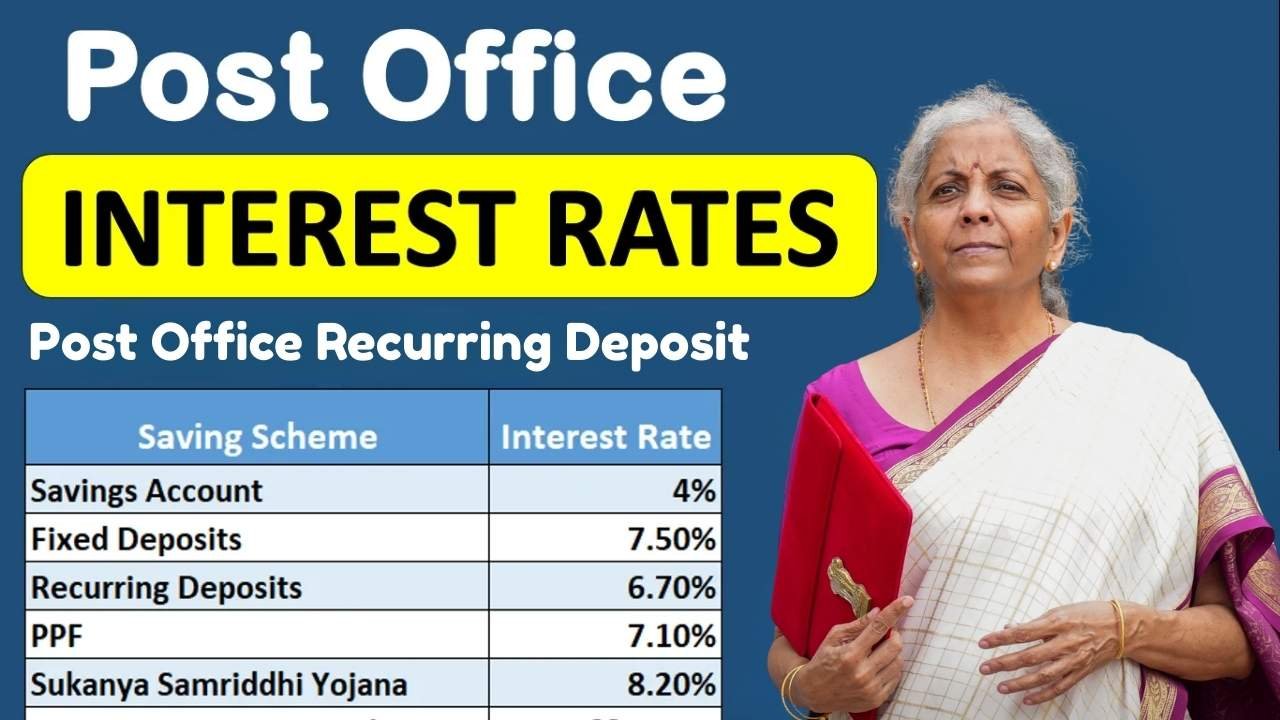The Post Office Recurring Deposit (RD) is one of the most trusted small savings schemes in India, especially for middle-class families who want to save regularly and build a secure financial future. With just ₹1,000 a month, anyone can start an RD account in 2025 and watch their savings grow steadily over time. Backed by the Government of India, this scheme is considered completely safe, making it a preferred choice for risk-averse investors who seek guaranteed returns.
Key Features of Post Office RD 2025
Post Office RD is a simple and systematic savings plan. Investors need to deposit a fixed amount every month, and at maturity, they receive a lump sum that includes both the principal and accumulated interest. In 2025, the scheme continues to attract small savers due to its flexibility and security.
The scheme comes with a five-year tenure, and investors can extend it further if they wish. Since deposits are made monthly, it is especially helpful for salaried individuals and households looking to cultivate a savings habit without straining their budget.
Interest Rates in 2025
The Ministry of Finance reviews the interest rates on small savings schemes every quarter. For 2025, the Post Office RD is offering an interest rate of 6.7% per annum, compounded quarterly. This ensures that even small deposits grow significantly over time due to the power of compounding.
For example, if you deposit ₹1,000 every month for five years, the total deposit amount will be ₹60,000. With 6.7% interest, you will receive nearly ₹70,000 at maturity. This extra return comes without any risk, making it more attractive than simply keeping money idle in a savings account.
Eligibility and Deposit Rules
Any Indian resident can open a Post Office RD account. Minors above the age of 10 can also have an account in their name, operated by a guardian if necessary. The minimum deposit is just ₹100 per month, making it affordable for everyone. There is no maximum limit, and deposits must be made in multiples of ₹10.
The deposit should be made before the 15th of each month. If someone misses a payment, a small penalty applies, but the account remains active. This flexibility ensures that even with irregular income, investors can continue their savings journey.
POMIS Calculator for 2025
To make financial planning easier, India Post provides an RD calculator. By entering the monthly deposit amount, tenure, and applicable interest rate, investors can quickly see their maturity value. This tool helps individuals understand how small monthly contributions can accumulate into a significant corpus over time.
For example, a monthly deposit of ₹2,000 for five years would result in nearly ₹1.4 lakh at maturity with the current interest rate. Such calculators are widely used by investors to plan their financial goals, whether it is for education, emergencies, or long-term savings.
Benefits of Post Office RD
The biggest advantage of Post Office RD is the safety of investment. Since it is government-backed, there is no risk of losing money. Another benefit is the disciplined habit it creates, as investors must save regularly. Over time, this not only builds wealth but also helps achieve short-term financial goals.
Other benefits include easy account opening at any post office, availability of nomination facilities, and the option to transfer accounts from one post office to another across India. Rural investors especially prefer RD since it is easily accessible and does not require complex documentation.
Loan Facility Against RD
One unique feature of Post Office RD is that investors can avail of a loan against their deposit. After completing one year or 12 installments, account holders can borrow up to 50% of the balance. This loan facility is especially helpful in times of financial emergencies, as it allows people to access funds without breaking their savings account. The loan must be repaid with interest, but it ensures that the RD continues to grow even while meeting urgent cash needs.
Premature Withdrawal Rules
While the RD scheme encourages long-term savings, it does allow premature closure after three years. However, investors will receive only the applicable interest, and some deductions may apply. Regular payment of installments is recommended to enjoy the full benefits of compounding at the end of five years.
Tax Considerations
Interest earned on Post Office RD is fully taxable under the Income Tax Act. There are no specific tax exemptions available, unlike schemes such as Public Provident Fund (PPF). However, many small investors still prefer RD for its safety and guaranteed returns.
How to Open a Post Office RD Account in 2025
Opening a Post Office RD account is simple and convenient. The applicant needs to submit identity proof, address proof, passport-size photographs, and a filled application form at the nearest post office. Payments can be made through cash, cheque, or even online transfers in certain branches. Investors also have the option of standing instructions from their savings account to ensure timely deposits every month.
Who Should Invest in Post Office RD?
The Post Office RD is suitable for individuals who want a safe, medium-term savings option without taking risks. It is ideal for salaried employees, parents saving for children’s education, and rural families who prefer government-backed schemes. Since the minimum deposit starts at just ₹100, even small-income households can benefit from it.
Conclusion
The Post Office Recurring Deposit 2025 remains one of the best ways to save small amounts regularly and build wealth over time. With an interest rate of 6.7%, easy account opening, and complete safety, it is a preferred choice for millions of Indians. Whether you start with ₹1,000 or more, the power of compounding ensures that your savings grow steadily into a sizeable corpus. For anyone seeking a disciplined and risk-free savings habit, the Post Office RD is a reliable solution.
Disclaimer
This article is meant for informational purposes only and should not be taken as financial advice. Interest rates and rules may change as per government notifications. Investors are advised to verify details from the official India Post website or consult a financial advisor before making investment decisions.



